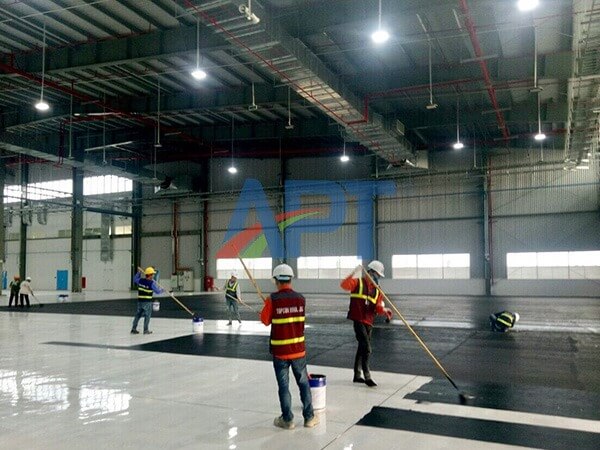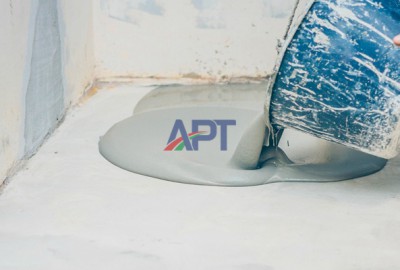Why must prevent electricity in factories?
In life, static electricity exists everywhere and people do not pay much attention to it due to insignificant effect. However, in manufacturing, static electricity is a big problem for many manufacturers because of the harm caused by it, so people always try to find ways to prevent static electricity.
What is static electricity?
Static electricity is the imbalance of the charge on the surface of a material. The charge will be stored there until it can be transmitted elsewhere through an electric current or electrical discharge. The term "static" in static electricity refers to the contrast with electric current, the form in which electricity is passed through a conductor and carries energy.
Electrostatic charge is created when two surfaces come into contact with each other and then separate, and at least one of these surfaces has a high electrical resistance (tends to insulate or interfere with current).
The effects of static electricity are familiar to everyday life because most people can feel, hear and see sparks when an excess charge is neutralized near a large conductor (ground wire for example).
Causes of the static electricity
Material is made up of atoms that are electrically neutral because they contain equal amounts of positive charges (protons in the nucleus) and negative charges (electrons in the shell). Electrostatic phenomena require separation of these positive and negative charges. When two materials come into contact, electrons move from one object to another, causing an excess of positive charge on one material, and an excess of negative charge on the other. When the materials are separated, this charge imbalance is maintained.
The problem is caused by static electricity
Electrostatic Discharge (ESD)
Similar to the lightning phenomenon in nature, static electricity will find a way to "discharge" in order to return to neutral state. When you see the shock of the door handle, there is actually an electrostatic discharge from your hand into the door handle. Electrostatic discharge level above 3000 Volts will be enough for you to feel "shock". At levels above 5000 Volts, you can hear the sound, and at levels above 10,000 Volts, you can see the electric discharge (like lightning). There are cases where the electrostatic discharge is large enough; appearing in an environment with a lot of explosive solvent vapors (gasoline) can cause a fire.
ESD in industrial production: The phenomenon of industrial electrostatic charge and discharge is caused by the movement of people and machines in the manufacturing process are very common. Usually the effect of electrostatic discharge / discharge is negligible but for specific industries that manufacture or store flammable substances or especially in the electronics industry, manufacturing and assembly circuit, the above phenomenon can cause a lot of damage.
Electrostatic Attraction (ESA)
Static electricity on the surface of an object, when large enough to the level (about 3000 volts) will create an electrostatic field, which will cause polarization for objects entering the electrostatic field. Electrostatic attraction, or Coulomb's force, will attract these objects to the surface of an electrostatic carrier (provided that this force overcomes other forces that are placed on the object, such as gravity).
The effects of static electricity in production
There are two basic types of harm. The first is Electrostatic Discharge (ESD) that causes damage, hitch, degradation of electronic elements, clusters (like circuit boards), or a complete device. The common way to cause harm is through an electric current, or through electromagnetic waves produced during the discharge process. The second is Electrostatic Attraction (ESA). There is a lot of dust in the air, which the naked eye cannot see. A dust particle of the size of 1 micro-meter is enough to short a semiconductor circuit, when the node-pitch is only counting by a few tens of nanometers (2015). This phenomenon of electrostatic dust extraction affects greatly the quality of production processes that need to clean surfaces such as printing, optical assembly, food and pharmaceutical packaging, coatings, paints.
Solved for electrostatic problem
Different materials have different solutions. For conductive materials the most common method is the direct grounding earth.
For materials that do not conduct static electricity such as natural, mixed materials, the only solution is to use an ionizer. This is a method of creating ions that neutralize electrostatic regions, if not neutralized by free charges; static electricity is lost very slowly. Insulating materials allow negatively and positively charged groups to form. When charges cannot travel on the surface of this material, grounding cannot remove these charges. Ionization is the only way of removing static electricity from insulating materials. The ionization of free electrons in the air by high voltage polarization creates a continuous stream of positive and negative charges. These charges will combine with opposite charges on the surface of the material thereby eliminating the electrostatic charge on the insulating surface.
Antistatic devices can remove ions by neutralizing them. Some common anti-static devices are: antistatic bar, ionizing nozzle, ionizing gun, air knife, ionizing blower, charging, and wrist tra. Electronic products and components are easily damaged by static electricity. To protect these products, antistatic bags are used. To antistatic for a printer system, people attach antistatic bars to some positions so that it neutralizes ions created from paper during rubbing, rolling discharge and drying.
To prevent static electricity during the painting process, an ion fan or antistatic bar mounted near the spray site is used so that these devices eliminate the paint particles. Due to not being contaminated with static electricity, the paint particles stick firmly to the surface of the seeds to be painted, creating a more aesthetic paint.
And there are many more applications of antistatic tools in preventing static electricity causing damage to production and human life.
Why is antistatic but not insulating?
Insulation is the use of materials that do not allow electrical current to pass. Therefore, the charges generated in the insulating area will stay there and there is a potential risk of causing electric discharges that cause fire and explosion.
So we need to control the conductivity with conductive materials but have a permissible resistance from 10^4Ω to 10^9Ω which dissipates the electrical charges created or put them down into the system and ground, protect products from short, fire, and explosion factors.
The main solution to help prevent static electricity for factory floors
There are actually 2 solutions: antistatic vinyl flooring and antistatic epoxy floor paint.
What is vinyl flooring?
Vinyl Flooring (Galaxy Vinyl Flooring): is made of PVC + 10% stone powder and other additives. PVC resin is a synthetic thermoplastic, produced from crude oil or artificial chemical compositions of table salt. This type of floor can dissipate electrical charge by ESD method. Vinyl flooring controls the electrostatic problems created by tables, chairs or people. For example, for normal floors, when people walk, it will generate 5000 Volts of electrostatic current, but for antistatic vinyl flooring, the generated current (if any) is only less than 12 Volts.
Advantages of vinyl flooring:
- Antistatic.
- Waterproofing and easy to clean.
- High aesthetics.
- Easy to install because vinyl sheets can be joined together.
Disadvantages of vinyl flooring:
- There are many circuits, easy to peel off.
- Chemical corrosion, difficult to repair.
- Floors can release toxic gas, which is not environmentally friendly.
What is antistatic epoxy paint?
Antistatic epoxy paint is a two-component epoxy system A and B. Antistatic paint has full features of normally epoxy paint such as aesthetics, antibacterial, abrasion resistance.
Furthermore, this coating system has ability of antistatic control, designed to protect the floor surface where unwanted electrical charge occurs thanks to its self-antistatic resistance or copper wiring. Antistatic epoxy paint system as a continuation layer, conducts electrical charges to the ground to help ensure safety for workers at work, prevent dust, fire and explosion, protect equipment, factories, laboratories.
Advantages of antistatic epoxy paint
- Antistatic.
- High aesthetics.
- Surface finish has no circuit.
- Antibacterial and easy to clean.
- High adhesion, good abrasion.
- Chemical resistance and good load capacity.
Disadvantaged of antistatic epoxy paint
- Requires high construction techniques.
- Some solvent-based paints are not environmentally friendly.
From the above information, APT wants customers to have a better understanding of static electricity, anti-static and anti-static measures to choose suitable products for their factories.







